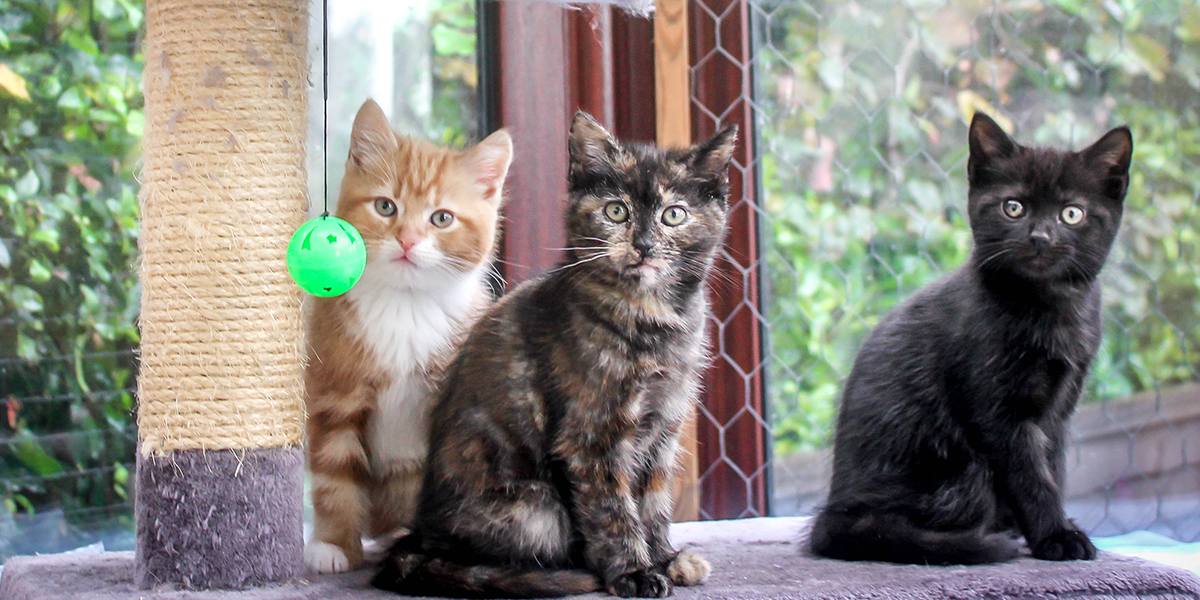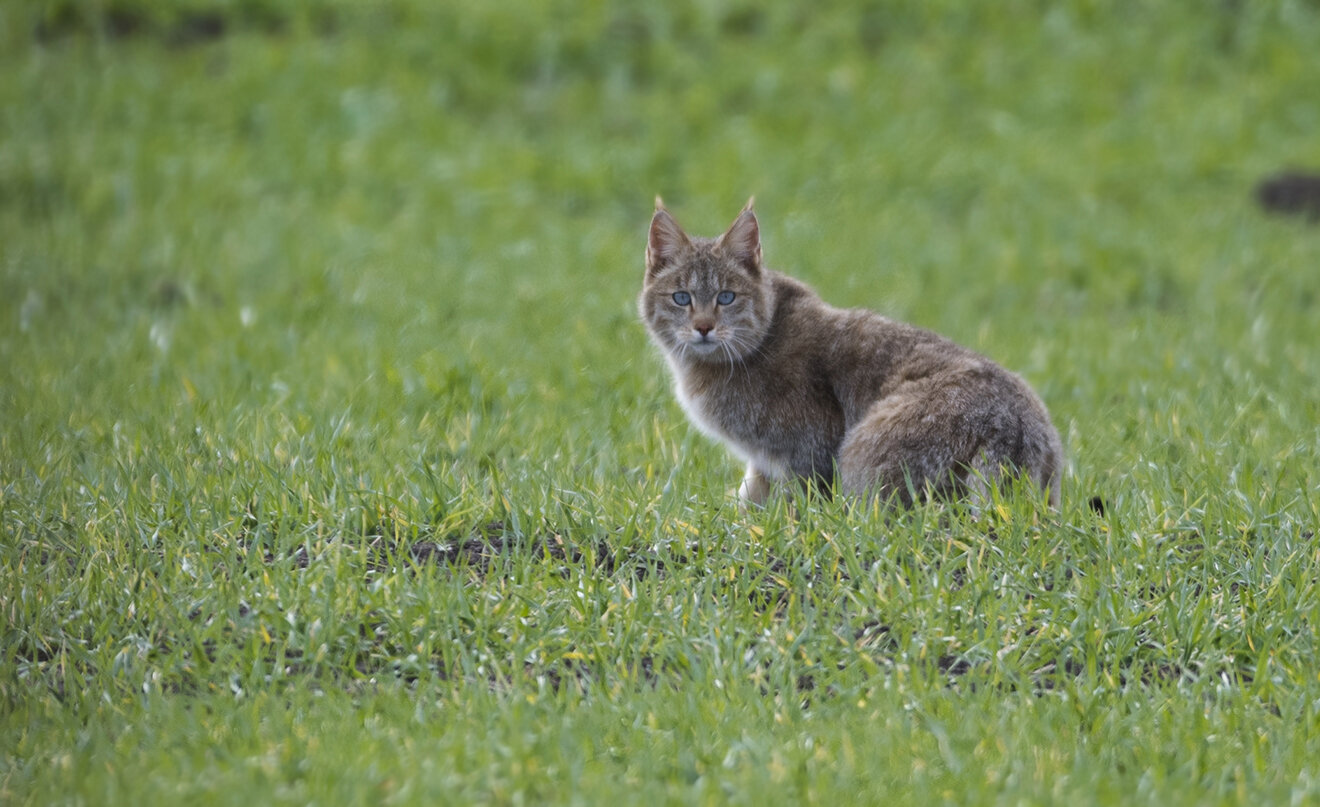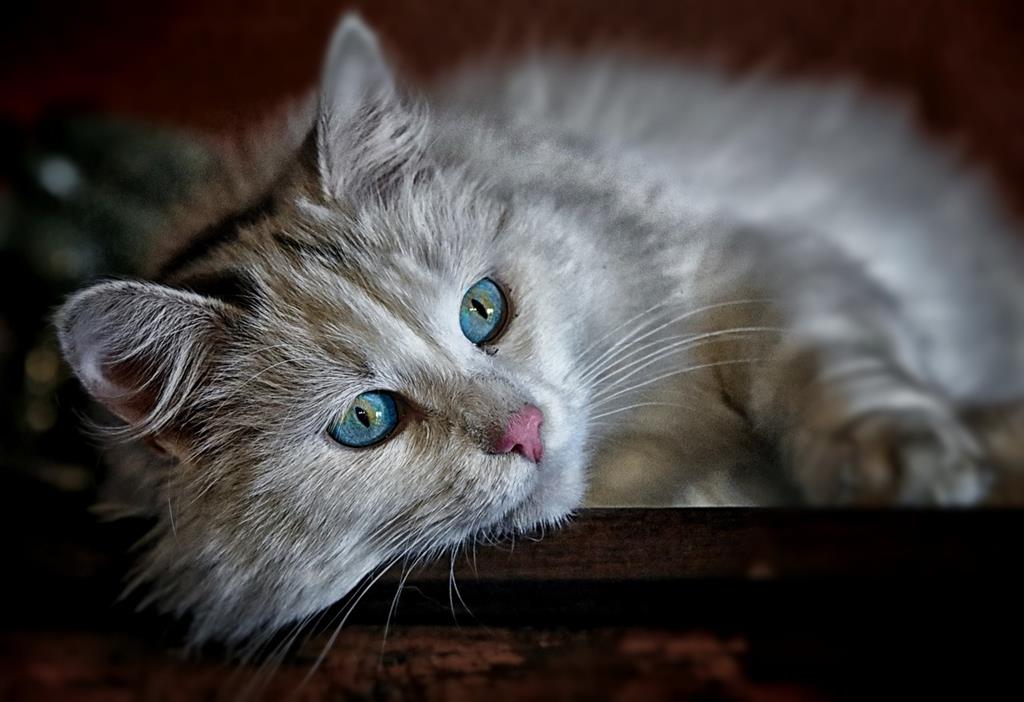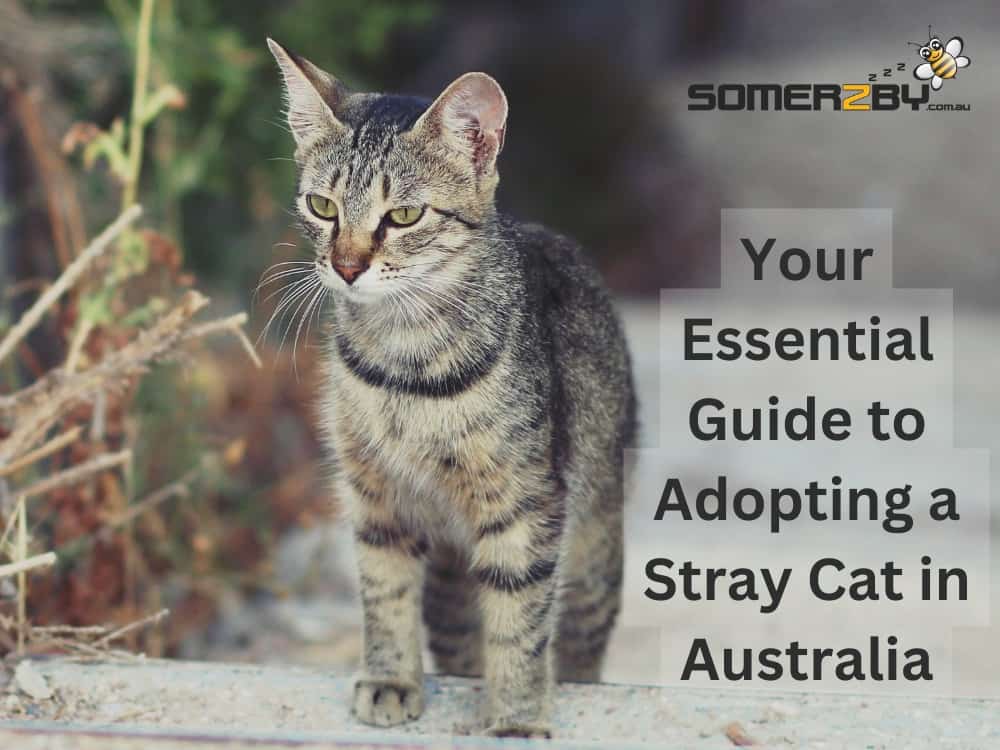To determine if a cat is feral, observe its behavior and physical condition. Feral cats are typically wary of humans and may have unkempt coats.
Identifying whether a cat is feral or a stray domestic cat is crucial for providing the appropriate care or intervention. Feral cats, born and raised in the wild, or stray felines that have lived without human contact for an extended time, exhibit distinct behaviors that differentiate them from typical domestic cats.
These cats are often elusive and avoid human interaction, making them more challenging to approach or handle. Understanding their nature helps in managing their populations humanely through practices like Trap-Neuter-Release (TNR) programs and ensures that stray pets possibly lost or abandoned can be assisted in finding homes. Recognizing the signs of a feral cat starts with keen observation of their social behavior and physical appearance, which are markers of their adaptation to a life without direct human caregiving.

Credit: icatcare.org
Defining Feral Cats
Understanding the world of feral cats is key to helping them. Many confuse feral cats with strays. Yet, they differ. This section sheds light on how.
The Origins Of Feral Felines
Feral cats have wild traits. They come from domestic cats. These cats left home. They had kittens with no human contact. Over time, kittens grew wild. Now, they thrive in the wild.
Distinguishing Between Stray And Feral Cats
Stray cats have had a home. They may approach people. Feral cats avoid contact. They live in groups, called colonies. Time of day helps tell them apart. Strays wander anytime. Ferals hunt at night. Here are key differences:
| Behavior | Stray Cat | Feral Cat |
|---|---|---|
| Human Interaction | Possible | Avoids |
| Feeding | Anytime | Nighttime |
| Grouping | Solo | Colonies |
Behavioral Signals
Telling apart a pet cat from a feral one is all in the behavior. Feral cats display distinct habits shaped by their wild, untamed nature. Understanding these behaviors is key. It helps in proper handling and care.
Signs Of Wariness
Feral cats typically show a high level of suspicion. Unlike house cats, feral felines avoid human contact. They tend to hide during the day and won’t approach for food or affection. A feral cat may stare with a steady, unblinking gaze.
- Hiding: Immediately seeks shelter or a hideout.
- No touch: Refuses petting, hisses if cornered.
- Alertness: Always scanning the environment.
Territorial Habits
A feral cat has a distinct territory it fiercely guards. It marks its area to keep others away. This behavior includes spraying, clawing, and loud vocals, especially at night.
| Behavior | Description |
|---|---|
| Spraying | Releases scent to claim area |
| Clawing | Marks physical spaces |
| Yowling | Loud calling, particularly at night |
Nocturnal Activity Patterns
Nocturnal behavior is a classic trait of feral cats. They emerge after dusk to avoid human interaction. If you see a cat active at night, it may well be feral. Their glowing eyes can be the only hint of their presence in the dark.
- Most active post-sunset and pre-dawn
- Hunts for food at night
- Less likely to be spotted during daylight hours
Physical Characteristics
Determining whether a cat is feral or not can often be done by observing its physical characteristics. While behavior provides clues, the condition and appearance of a cat offer tangible signs. Let’s take a closer look at the physical traits that can help identify a feral cat.
Coat Condition And Grooming Habits
A cat’s coat is a telling sign of its lifestyle. Pet cats usually have clean, well-kept fur due to regular grooming and care. Feral cats may also groom themselves, but their coats often show the roughness of outdoor life. Look for these key indicators:
- Matting and tangles: A sign of less frequent grooming.
- Dirt or debris: Feral cats may have leaves or burrs in their fur from their environment.
- Thicker undercoats: This can be an adaptation to living in colder climates.
Physical Marks Of A Feral Lifestyle
Feral cats often bear marks from their tough lives outdoors. Identifying these marks can be crucial:
| Mark | Description |
|---|---|
| Scars and wounds | From fights or rough conditions. |
| Clipped ears (TNR) | A sign of trap-neuter-return programs. |
| Missing fur | Possibly from scuffles or skin conditions. |
Pay attention to a cat’s ears and tail. Bite marks on ears or a rough tail often indicate a feral lifestyle.

Credit: www.tuftandpaw.com
Social Interaction Cues
Understanding the behavior of cats can be quite puzzling. When it comes to feral felines, their social interaction cues are key indicators of their wild nature. Feral cats differ from domestic ones in how they respond to humans and interact with other cats. Through observing social interaction cues, you can learn to distinguish whether a cat leans more towards the wild or the tame side.
Response To Human Presence
Cats exhibit varying behaviors when they sense human presence. A feral cat often shows distinct signs in response to humans:
- Avoidance: Feral cats typically steer clear of humans. They prefer solitude and will likely flee when approached.
- Aggression: If cornered, they might hiss or swat, displaying defensive postures.
- Observation from afar: Curiosity may prompt them to watch you, but they keep a safe distance.
- No vocalization: Unlike pet cats, ferals rarely meow or purr around humans.
Interactions With Other Cats
The way cats interact with their feline friends can tell you a lot about their background. Feral cats often:
- Roam in groups: These cats tend to form colonies for survival, particularly around food sources.
- Display hierarchy: Within a group, there’s a clear pecking order. Dominant cats eat first.
- Are territorial: Males mark their territory and may fiercely defend it from intruders.
- Show social grooming: Bonds between colony members lead to grooming each other, a sign of trust.
Feeding Patterns
Understanding a cat’s ‘Feeding Patterns’ can shed light on its background. Feral cats and pet cats eat differently. Key behaviors set them apart. Let’s examine these.
Foraging Tendencies
Feral cats often fend for themselves. They develop survival skills to find food. Watch for these signs:
- Hunting prowess: Feral cats catch birds and rodents.
- Scavenging: They search trash bins for scraps.
- Eating patterns: Feral cats eat at various times.
Reactions To Being Fed
Your approach matters when feeding a potentially feral cat. Observe these reactions:
| Action | Feral Cat Reaction | Non-Feral Cat Reaction |
|---|---|---|
| Offering food | Stays cautious, may wait until you leave | Approaches without much hesitation |
| Feeding schedule | Irregular visits, unpredictable | Consistent visits at feeding times |
Note body language. Feral cats remain alert and distant. They may not eat until they feel safe. In contrast, non-feral cats show trust and familiarity.
Health And Sterilization Indicators
Telling if a cat is feral or not can be tricky. Look for health and sterilization indicators. These clues are often clear signs. They help distinguish feral cats from strays or pets.
Ear Tipping And Other Signs
Ear tipping is a universal symbol. It means a cat is sterilized and vaccinated. Vets remove a small part of the cat’s left ear. This happens during spay or neuter surgery. It’s painless for the cat. It helps identify fixed ferals. Check for a tattoo in the cat’s ear or inner thigh. This also indicates sterilization. Collars are rare on feral cats, unlike pets.
Health Difficulties Common To Feral Cats
Feral cats face unique health challenges. They lack regular medical care. Look for these signs:
- Coat appearance: Ferals often have matted or unclean fur.
- Eyes: Look for discharge or signs of injury.
- Nose: A healthy cat has a clean nose. Crust or discharge can be a concern.
- Weight: Ferals may be underweight due to food scarcity.
- Behavior: Feral cats tend to avoid humans. They are more active at night.
Note any limping or obvious injuries. Feral cats often get into fights. This can result in wounds or abscesses.
Ways To Help Feral Cats
Do you wonder how you might aid feral cats in your community? Understanding how to help these stealthy creatures can make a considerable difference. Let’s explore effective methods to support feral friends.
Trap-neuter-return Programs
Trap-Neuter-Return (TNR) initiatives are crucial for feral cat welfare. These programs humanely trap cats to spay or neuter them. Afterward, they return the cats to their habitat. This approach prevents overpopulation and enhances the cats’ lives. Check out local TNR programs and see how you can contribute, be it through volunteering or donations.
- Volunteer: Offer time to help trap or transport cats.
- Donate: Provide funds or supplies like traps.
- Educate: Raise awareness in your neighborhood.
Supporting Local Feral Cat Colonies
Local feral cat colonies benefit from community support. Safe shelters and consistent food sources enable these cats to thrive. Find out how your assistance can keep them healthy and secure.
| Support Type | How to Help |
|---|---|
| Shelter | Build or provide warm, safe shelters. |
| Food | Establish regular feeding routines. |
| Monitoring | Keep an eye on the health and safety of the colony. |
Remember, these furry creatures require compassion and action. Your help can pave the way to a better life for feral cats.

Credit: phys.org
Frequently Asked Questions For How To Tell If A Cat Is Feral Or Not
How Do You Tell If A Cat Is A Feral?
Feral cats often avoid human contact, display fear in human presence, and lack identification such as collars. Their behavior is typically skittish, and they’re usually not inclined to approach people. They often live and hunt in groups, known as colonies.
What Are The Behaviors Of A Feral Cat?
Feral cats exhibit caution around humans, are nocturnal, and often form colonies. They hunt for food and display territorial behavior, avoiding contact with people and seeking shelter in secluded areas.
What Is The Difference Between A Feral Cat And A Regular Cat?
A feral cat is a wild, unsocialized domestic cat, whereas a regular cat is typically tamed and lives with humans as a pet. Feral cats often survive with minimal human interaction, making them more independent and wary of people.
At What Age Is A Cat Considered Feral?
A cat is typically considered feral if it has not had human contact before the age of 8-10 weeks and lives independently from humans.
Conclusion
Determining the nature of a cat, be it feral or not, requires attention to detail. Look for signs in behavior, health, and social interaction. Remember, patience and observation are key. Safeguarding their welfare is our responsibility—approach with kindness and consult professionals as needed.
Let’s build a world where every cat is understood, respected, and cared for, regardless of its origins.



